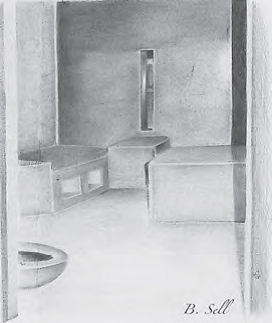On June 29, 2013 a Black Texas Department of Criminal Justice
Correctional officer with the last name Ford used his handcuffs on a
Latino/Mexican prisoner as if the handcuffs were brass knuckles. Officer
Ford punched the prisoner repeatedly in the head. Fellow prisoners who
witnessed this heinous act requested to be given witness statements.
Captain Vincent, Lieutenant Sutton, and Sergeant Landrum refused to
produce witness statements. This is just one more incident adding to a
long list of human rights abuses and violations that have taken place on
the Estelle Unit located in Huntsville, Texas.
We have found through our experience that the
Grievance
Program is corrupt in Texas prisons. Nevertheless, in order to
maintain a record of the incident and preserve the right to file 42 US
1983, total exhaustion of administrative remedies is a must per the
corrupt PRLA law. I and many comrades in Texas and beyond have written
the U.S. Department of Justice - Civil Rights Division - Special
Litigation Section. I’ve gotten back the same form letter response over
6 times! They ain’t doin’ shit! The abuse continues.
Handcuffs being used as brass knuckles!!? Ranking supervisors refusing
to pass witness statements!!? These are criminal acts. There is an
ongoing conspiracy to cover up said illegal acts in Texas prisons.
I have discovered a “formula” that works very well in reference to
combating these oppressors in Texas, especially when they band together
in order to cover up blatant acts of abuse and humyn rights violations
by TDCJ employees:
-
Media coverage - form bonds and relationship of trust and respect with
journalists.
-
Prisoner rights activists - we all need free world helpers.
-
State and federal legislators - you must seek an authority higher than
the prison administrators.
This 3 step formula is good for all states but the specifics will change
by geographic location. However, at this time our focus is on Texas!
Step 1s don’t work, Step 2s are a joke. O.I.G.? Impotent. Executive
Director Brad Livingston, Texas Board Chairman Oliver Bell, all T.D.C.J.
offices and entities operate under the same program and that is
cronyism, nepotism, obstruction of justice tactics and cover-ups.
Who is ordering TDCJ to downplay and coverup acts of abuse and barbaric
acts of violence aimed at prisoners? Answer: Texas State Attorney
General Gregg Abbott! He is at the top of the food chain and remember he
is running for Governor in Texas. It is time for the Attorney General’s
office to be held accountable for all these heinous acts of violence
being perpetrated by TDCJ employees with no accountability.
Putting Theory into Practice
I’ve set forth the formula, now it is time to fill in the blanks so we
may test our model.
Media/Journalists
-
Brandi Grissom - Managing editor/journalist, The Texas Tribune, 823
Congress Ave, Suite 210, Austin, TX 78701
-
The Texas Observer, Attn: Emily DePrang - Staff writer, 307 W. 7th St,
Austin, TX 78701
-
Austin American Statesman, Attn: Mike Ward - Journalist, 305 S.
Congress, Austin, TX 78704
-
The Prison Show!, Kathy Griffin Grenan, Hank Lamb, KPFT-FM 90.1, 419
Lovett Blvd., Houston, TX 77006
Prison Activist Organizations
-
Texas CURE, Attn: Joan Covici-Michael Jewell & Friends, PO Box 372,
Barleson, TX 76097
-
Attn: Quanell X & Krystal Muhammad, SHAPE Community Center, 3815
Live Oak, Houston, TX 77004
Legislators - at this time Estelle Unit is starting to register on the
radar, let’s help it along
-
Texas State Senate, Senator John Carona, PO Box 12068, Capitol Station,
Austin, TX 78711
-
Texas State Senate, Senator Wendy Davis, PO Box 12068, Capitol Station,
Austin, TX 78711
Comrades, all of this information is meaningless and useless if you do
not test it - practice it! Let’s consider a quote from our esteemed
Comrade Fred Hampton: “You might say, ‘well the way I feel, people ought
to be able to walk around naked because rape is love.’ That’s idealism.
See what I mean? You’re dealing in metaphysics. You’re dealing in
subjectivity, because you’re not testing it with objective reality. And
what’s really wrong is that you don’t go test it. Because if you test
it, you’ll get objective. Because as soon as you walk out there (naked)
a whole lot of objective reality will vamp down upon your ass and take
whatever you have. So whenever this happens, this is when people get a
whole lot of mistaken ideas. That’s why a lot of you can’t understand
and can’t agree with a lot of what we said. You’ve never tried it.” He
continues later saying “That’s what the Black Panther Party deals with.
We’re not metaphysicians, we’re not idealists, we’re dialectical
materialists. And we deal with what reality is, whether we like it or
not.”
The Reality
The reality in Texas prisons is we the lumpen underclass are being
degraded, dehumanized, mistreated, and abused. The persons who are in
positions to protect us from such abuses are turning a blind eye to our
plight. We are being murdered, raped, and beaten by the very people who
are being paid to provide safety. The only way to combat this is by
shedding light on the Texas Department of Criminal Justice and the
Attorney General’s Office who is 100% culpable in regards to these
crimes against humanity.
MIM(Prisons) is the tip of the spear. I am only one of many hands
wielding the spear. I close with a
quote
from Chairman Mao: “Our point of departure is to serve the people
whole-heartedly and never for a moment divorce ourselves form the
masses, to proceed in all cases from the interests of the people.” Mao
Zedong, On Coalition Government
If we put as much time into this fight as we do on the domino table or
the rec yard, change will come in Texas. The comrades in California are
a stellar example of solidarity in action. As Eric B. and Rakim used to
say “Follow the Leader!”
All Power to the People!









